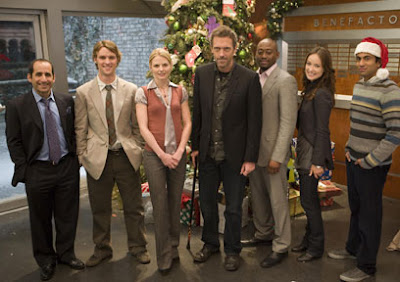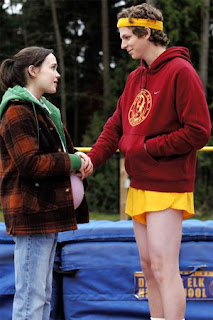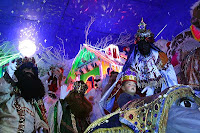Hints on some of what might be on those lists are below.



Sometimes random thoughts on life and entertainment swirl together in my little brain and try to collide into one cohesive idea.
Will: You like that stat.
Josh: I do.
Will: Why?
Josh: Because 9% think it's too high and shouldn't be cut. 9% of respondents could not fully get their arms around the question. There should be another box you can check for "I have utterly no idea what you're talking about. Please, God, don't ask for my input."
 I'd read the travel brochures: It's the kinder, gentler Cancun. A beachside paradise without the resort infestation, a haven for those seeking a more tranquil experience by the turquoise waters of Mexico's Caribbean coast.
I'd read the travel brochures: It's the kinder, gentler Cancun. A beachside paradise without the resort infestation, a haven for those seeking a more tranquil experience by the turquoise waters of Mexico's Caribbean coast. Another easy hour-long journey from Playa del Carmen is the archaeological site of Tulum, spectacular not for the crumbling buildings, which betray the Toltec influence on a declining Mayan civilization, but for their setting on the cliffs above the sea. While you can't climb the temples and pyramids, you can stand on the rocks above for a breathtaking view of the tiny beach nestled between ancient ruins.
Another easy hour-long journey from Playa del Carmen is the archaeological site of Tulum, spectacular not for the crumbling buildings, which betray the Toltec influence on a declining Mayan civilization, but for their setting on the cliffs above the sea. While you can't climb the temples and pyramids, you can stand on the rocks above for a breathtaking view of the tiny beach nestled between ancient ruins. Christmas Day it seems everyone packs into the Alameda, a central park close to where we live. We went there to get our picture taken with the Three Kings (they take over the same venue where Santa used to be) and it's a hilarious photo. [I can't find it at the moment, but it was my friend and I sitting with Los Reyes Magos in one of those Santa setups, and bizarre items like stuffed Teletubbies in the background]. It put us in a good, Christmasy mood. Then we had a turkey dinner at a restaurant and went to some non-Mexican friends' house to socialize (translation: drink, eat, and play Risk, believe it or not.)
Christmas Day it seems everyone packs into the Alameda, a central park close to where we live. We went there to get our picture taken with the Three Kings (they take over the same venue where Santa used to be) and it's a hilarious photo. [I can't find it at the moment, but it was my friend and I sitting with Los Reyes Magos in one of those Santa setups, and bizarre items like stuffed Teletubbies in the background]. It put us in a good, Christmasy mood. Then we had a turkey dinner at a restaurant and went to some non-Mexican friends' house to socialize (translation: drink, eat, and play Risk, believe it or not.) Dexter is dead. Big Love has been ripped from my arms.
Dexter is dead. Big Love has been ripped from my arms. "What's in a name? That which we call a rose by any other name would smell as sweet." Shakespeare thought so. Gogol Ganguli might disagree.
"What's in a name? That which we call a rose by any other name would smell as sweet." Shakespeare thought so. Gogol Ganguli might disagree.Gogol: So I'm two inches away from her. Her luscious lips part. Just as I'm about to kiss her, she looks at me and she says, "What's your name?"
Friend: Gogol Ganguli.
Gogol: End of seduction 101.
In director Mira Nair's film The Namesake, an adaptation of the novel by Pulitzer Prize-winning author Jhumpa Lahiri, Gogol struggles to reconcile his American upbringing with his Indian heritage, as well as a name that represents neither and both at the same time.
Kal Penn, currently seen as one of the new fellows on House and best known as the stoner on a quest in Harold and Kumar Go To White Castle, takes a serious turn in The Namesake while demonstrating the same considerable charm.
Though it's his character referenced in the title of The Namesake, for the first part of the film Gogol is nothing more than the name of his father Ashoke's favourite author, Russian oddball Nikolai Gogol. The movie's core is really the love story between Ashoke (Irfann Khan) and Ashima (Tabu), whose quiet devotion acts later as a counterpoint to their American son's more expressive romances.
Our first glimpse of Ashoke has him reading the collected stories of Gogol just as the train he's riding in derails. Ashima we meet as a young woman trying on the newly recovered Ashoke's shoes just before the meeting that will lead to her marrying and accompanying this unknown man to New York.
As they get to know each other, their love becomes obvious but unspoken, and we follow them through a span of about 25 years and two children. The Bengali family lives their lives in two countries and two cultures, returning often to the warmth and colour of Calcutta, and lamenting what they've lost in their new life as much as they appreciate what they've gained.
One of the most obvious losses is the gap between their more traditional ideals and their Americanized children's, particularly when Gogol distances himself from his family to the point of rejecting the name that represents the life his father might never have had, after that train wreck. ("We all came out of Gogol's Overcoat," Ashoke quotes.)
His parents had given him the name Gogol as a baby while waiting for inspiration for his proper name, Nikhil. While a five-year-old Gogol decides to keep that nickname, a teenaged Gogol regrets it. So adult Gogol becomes Nick, and Nick becomes a stylish, successful young man becoming part of his rich white girlfriend's parents before ever introducing her to his own.
He doesn't so much want to turn his back on his family or heritage as to be recognized as someone other than simply the product of them. But small, telling moments show that he is not always wholly accepted as a product of the country he was born in, either, and because of that he is in fact a part of both and neither at the same time.
One of the movie's biggest weaknesses is that it feels very much like an adaptation of a book. The story has an episodic feel to it, with some of those episodes getting short shrift. Particularly underdeveloped is Gogol's later relationship with a sexy Bengali woman, Moushumi (Mo), who first appears to be more his match, and who has chosen a third culture, French, to embrace. It's an interesting but largely unexplored theme, the identity that is created from coming from one place, living in another, and embracing the otherness of a third.
But Mira Nair (Mississippi Masala, Vanity Fair) is a filmmaker with a lush visual style, and The Namesake is full of scenes beautiful both for their artistry and for their affecting character moments. A scene of a mature Gogol trying on his father's shoes echoes the earlier scene of a young Ashima, and airports become magical or heartbreaking gateways between two worlds. She makes us care about these characters even when their stories aren't explored as much as they could be.
The DVD extras include a commentary with Nair, a few deleted scenes that give a bit more time to Mo, and a brief segment called "In Character with Kal Penn," in which the actor is too erudite to be mistaken for Kumar as he insists that Gogol is comfortable with his identity but not the assumptions others make about it. (In a nice touch, given the themes of the movie, Penn is credited twice for The Namesake, under Kal Penn as Gogol, and under his birth name, Kalpen Modi, as Nikhil.)
In addition, "Anatomy of The Namesake" is a well-titled half-hour documentary dissecting the filmmaking process for a class at Columbia University. Director and producer Mira Nair is joined by others on her team to talk about everything from the vision of the film to financing to post-production. The detail is mind-numbing to a casual film fan like me who's interested in behind the scenes machinations but can't be bothered to understand exactly what a bond company is. Despite that, this is the kind of niche extra I think DVDs should do more often, in this case offering budding filmmakers a mini lesson.
The Namesake isn't as tightly woven or ultimately satisfying a story as I'd have liked, but the warm, funny, touching film uses a specific immigrant experience to illuminate universal themes of family, identity, and loss, which made following its meandering path through the lives of these characters rewarding.
The prologue, a scene of a childhood game between brothers, perfectly illustrates the relationship of silent, responsible Arthur -- the one his mother depends on -- and his charismatic, reckless little brother Jake -- the one his mother loves. It's a relationship that's irrevocably changed by an incident on the titular bridge, complicated by the arrival of the beautiful Laura, and that comes to a head in the charged climax, decades later.
The book spans Arthur's depression-era childhood on a farm in remote northern Ontario, through the devastation of World War II as seen from the home front, and into the 1960's life of young Ian, who begins to work on Arthur's farm as part of his attempt to escape from the expectation that he will become the next Dr. Christopherson.
The novel's moody atmosphere is punctuated with humour, and Lawson brings alive the tiny (and fictional) town of Struan and its inhabitants through fabulous details of the doctor's practice and life on the farm, for example.
By flicking back and forth through time, The Other Side of the Bridge sets up a sense of the stories colliding, but not of the how, until Lawson chooses late in the novel to reveal key scenes. We have information early on, like the fact that Laura becomes Arthur's wife, or that Ian has a crush on his boss's wife, that we don't quite know what to do with until the story unfolds. That structure adds tension to the quiet world of Arthur Dunn and his young employee, both fighting against their seemingly inevitable fates.
Long-listed for the Man Booker Prize, The Other Side of the Bridge is a tender yet catastrophic story of family expectation, responsibility, and rivalry, with exquisite imagery and detail. I haven't yet read Crow Lake, Lawson's first novel, but The Other Side of the Bridge has ensured that I'll be picking that one up, too.
